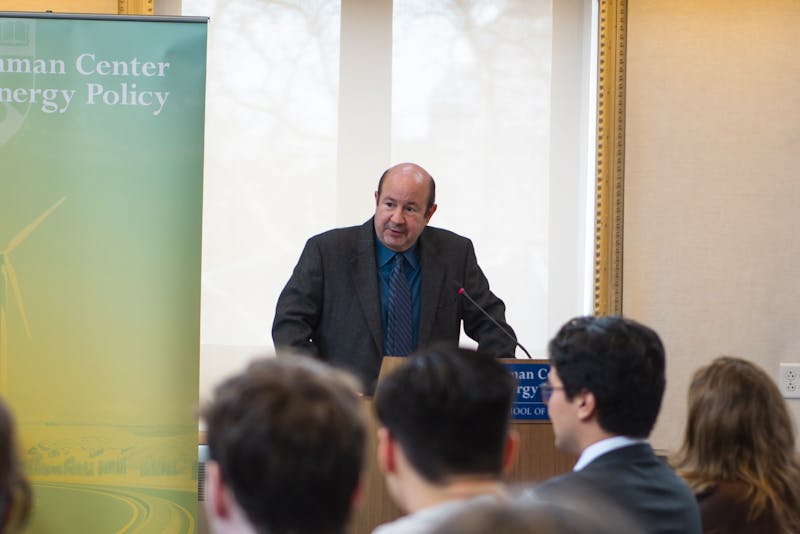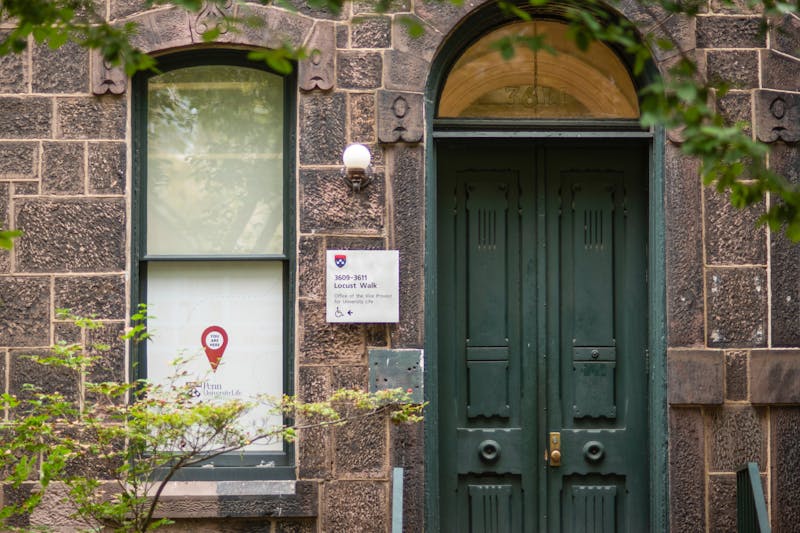He said he hopes toHe said he hopes toeliminate confusionHe said he hopes toeliminate confusionabout the purpose ofHe said he hopes toeliminate confusionabout the purpose ofthe booths by removingHe said he hopes toeliminate confusionabout the purpose ofthe booths by removingthem altogether. and Marisa Katz Public Safety Managing Director Thomas Seamon last week ordered the removal of three of five security kiosks originally erected as part of University President Judith Rodin's master safety plan. "It was a good idea, but it didn't work out the way we had hoped," Seamon said yesterday. Over the weekend, Physical Plant workers removed the kiosk at 40th and Locust streets. The kiosks at 36th and Sansom streets and 37th Street and Woodland Drive will also be dismantled soon. Seamon said he does not know how much the removal of the kiosks will cost the University. Installed in May 1995 at a cost of roughly $225,000, the kiosks were intended to serve as the primary base of operation for security officers patrolling along the main arteries of campus. Originally, the kiosks were to be manned from 3 p.m. to 5 a.m. each night. Last November, criticism about the effectiveness of the kiosks prompted Seamon to announce that guards would no longer man the booths at night, instead patrolling the campus by foot. At the time, Chris Algard, who now directs security guard operations, said the kiosks would serve as information booths during the day and that at night, roving Allied Guards would use them to fill out reports and as shelter during inclement weather. Seamon said yesterday that since that decision last fall, people who expected the booths to be staffed complained when no one manned them. That confusion led to his decision to remove the kiosks entirely. Seamon added that positioning guards with radios on the street rather than inside the kiosks improves their visibility and the effectiveness of their patrols. When the kiosks were first built, then-University Police Commissioner John Kuprevich said the guards manning the booths would provide additional "eyes and ears" for the campus. "We wanted to have places north to south, east to west, where people could feel a consistent security presence where prevention is potentially higher if they chose to use those areas," Kuprevich said at the time. Last fall, members of the Panhellenic Council began to express safety concerns, complaining that the kiosks limited the guards' ability to patrol effectively by reducing their line of sight and preventing their mobility. In response, Seamon said he recognized that walking guards are more effective because their presence can act as a deterrent. "When we see one method is better than another, we will change in a minute," he said last October. The removed kiosks will now go into storage until Public Safety decides how to use them. Seamon said they could be used as security booths in University parking lots, which have been the sites of numerous crimes in the last year. "The University spent money on them, and we're not going to throw them away," Seamon said. The kiosks at 37th and Locust streets and 33rd and Smith streets will remain, and guards will continue to staff them. In response to a wave of armed robberies near campus this fall, Seamon hired 10 Spectaguards to patrol the area between 40th and 43rd streets. After the recent murder of Biophysics and Biochemistry researcher Vladimir Sled on 43rd Street and Woodland Avenue, he added three more guards to the special detail.
The Daily Pennsylvanian is an independent, student-run newspaper. Please consider making a donation to support the coverage that shapes the University. Your generosity ensures a future of strong journalism at Penn.
DonatePlease note All comments are eligible for publication in The Daily Pennsylvanian.







